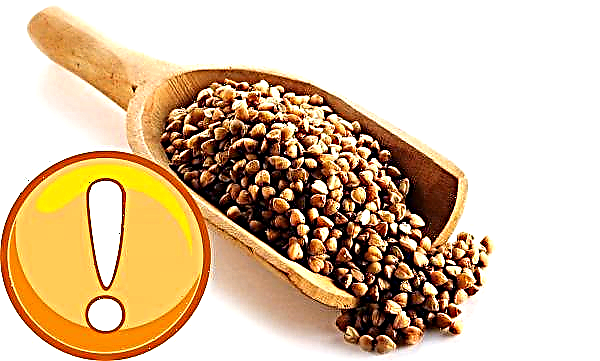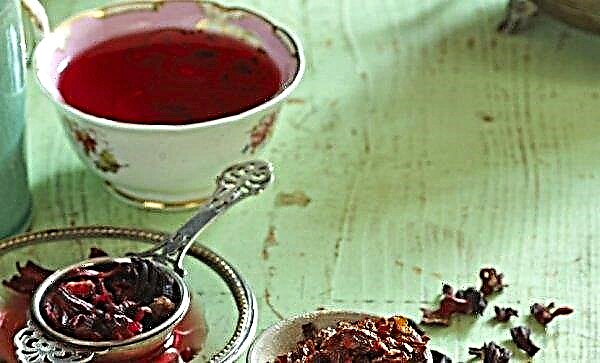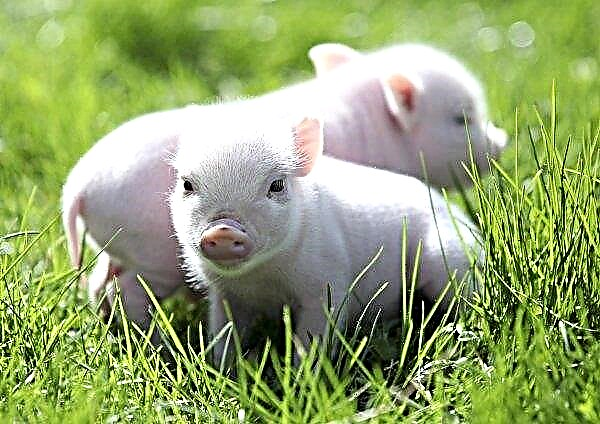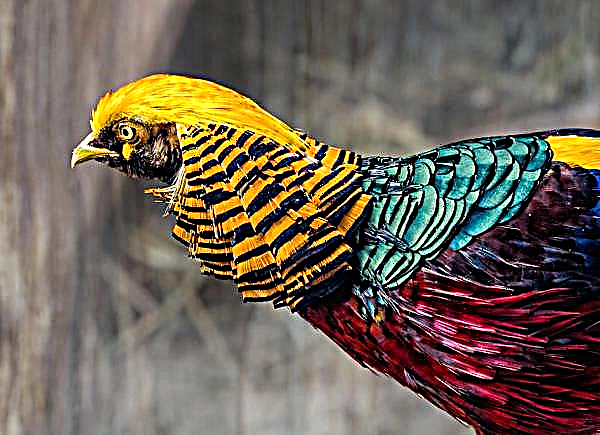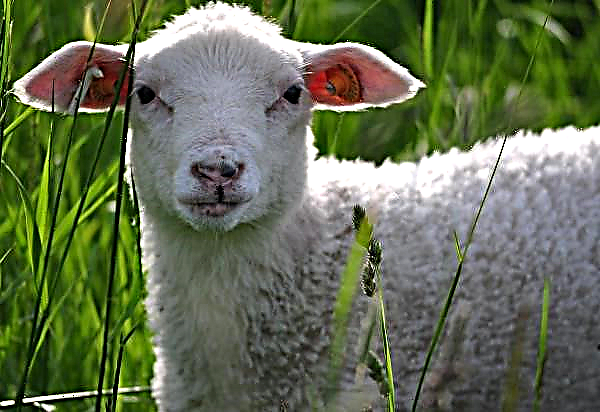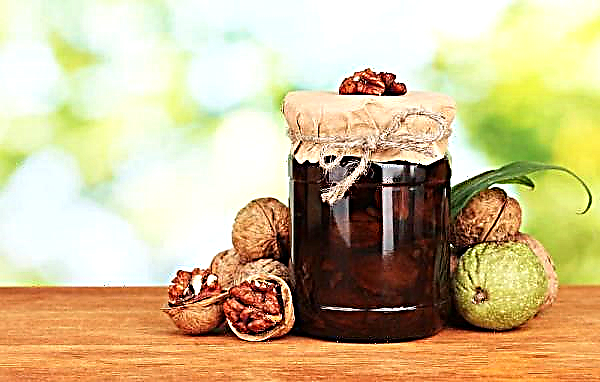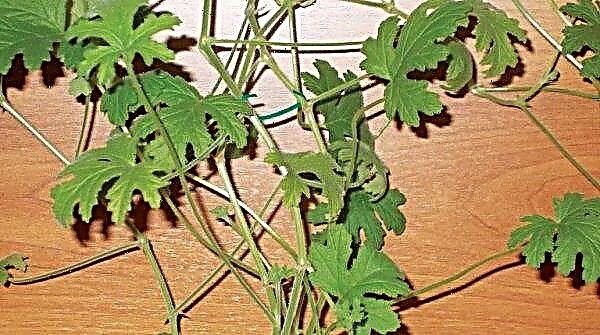The greenhouse environment is favorable for the reproduction of insect pests. One of these plant pests that love heat is whitefly. We will get acquainted with the signs of the appearance of this insect on tomatoes and the methodology of combating it, as well as how to avoid its appearance.
Pest Description and Habitat
Whiteflies are small insects (about 1.5–2 mm) with two whitish pairs of wings with powdery bloom. Many compare their appearance with small moths, although they are closer to aphids than to butterflies. Insects feed on plant juices and lay 0.25 mm eggs on the underside of the leaves. Appearing subtle larvae also suck juices from green mass and stain leaves with products of their vital activity, against which the plant is often affected by a sooty fungus.
Did you know? The family of whiteflies has more than 1,500 species, but the most studied are those that are known as pests: greenhouse, citrus, strawberry, cabbage and tobacco whiteflies.
Whitefly is a thermophilic insect; the temperature range + 21 ... + 28 ° С and humidity from 60% are most suitable for it. Such conditions just correspond to greenhouse buildings. When the temperature drops below + 10 ° C, the whitefly dies, but not its oviposition. Eggs die in large frosts, and in mild winters they successfully survive wintering even in open ground.
Signs of appearance and damage
You should periodically inspect the tomato bushes in the greenhouse and look under the leaves, in time to detect the following signs of whitefly activity:
- The appearance of adhesive varnish coating.
- Spots at the bottom of the sheet (white, yellow, black).
- Folding and wilting foliage.
- The whitefly can also be seen with the naked eye, especially if it has bred. In the latter case, just shake the tomato bush to see the flock of small white insects soaring.
- Poor ripening of tomato fruits - white streaks appear in their pulp.

Greenhouse whitefly control methods
There are many completely different methods of controlling whiteflies. We consider each of them in more detail.
Mechanical
To get rid of whiteflies in plantings with tomatoes, many gardeners use mechanical methods of control, because they are environmentally friendly, without the use of chemicals harmful to the human body. To do this, adult pests are knocked down by the pressure of water from the hose and the soil is dug up. Larvae from leaves of the plant (especially from the back) are cleaned with a sponge moistened in water with laundry soap dissolved in it. A vacuum cleaner is also used to collect flying butterflies.
Did you know? Insects appeared on Earth 400 million years ago and are considered not yet fully understood. They are so hardy that they will survive any cataclysms that humanity will not tolerate.
Another mechanical way to kill flying pests is with sticky traps. They can be purchased at the store, or can be made independently. When buying, it is better to take such devices of a yellow color, since such a color most attracts moths. For the manufacture of traps with their own hands, use sheets of cardboard or thick paper. Rectangles are cut out of them with scissors, which are painted with yellow paint.
After the paint has completely dried, a sticky layer is evenly applied to it. To do this, you can use petroleum jelly, honey with rosin, solid oil or glue from small rodents pests. Then such rectangles are attached to the installed supports or with a rope to the roof of the greenhouse structure. These traps should hang at the top of the tomato bushes.

Sticky rectangles raise as plants grow. After the sticky layer is filled with insects, it is necessary to clean the trap and grease the adhesive layer. To improve the result from the use of such devices, experts recommend shaking the tomato bushes lightly. Alarmed moths fly up and fly to the bright color of the trap.
Chemical
Insecticides are excellent for killing whiteflies. It is worth noting that the whitefly quickly forms an immunity to the chemical product used, so the means used must be changed periodically.
Important! When using insecticides, the recommended standards specified in the instructions must be observed. Excess pesticides can adversely affect plants and crops.
The following products give a good result for pest control:
- Based on imidacloprid - “Commander”, “Confidor”, “Tanrek”, “Golden Spark”, “Image”. The active substance is toxic to sucking pests. It penetrates the green mass of plants, but does not greatly affect the fruits. In Europe, it is forbidden to use outdoors, as it causes the death of bees.
- Based on acetamiprid “Mospilan.” Similar in action to the previous group. Its advantage is that it belongs to new pesticides and pests are not used to it, in addition, it is slightly toxic to bee families.
- Based on Malathion - “Fufanon”, “Kemifos”, “Novaktion”. Drugs quickly decompose in the environment. They are most effective indoors.
- Based on thiamethoxam “Actara.” This pesticide also does not reach the fruit, but mainly accumulates in the greenery and poisons sucking insects.
- Based on pyrimifos methyl “Actellicus.” Effective against various insects.
- Pyrethroid Based - “Buprofezin”, “Appleood”, “Karate”. These are the least toxic insecticides, which are analogous to the natural pyrethrins contained in the flowers of the pyrethrum. They are not dangerous to bees and fish.

Folk remedies
Gardeners to fight whitefly often use folk methods:
- Greenhouse disinfection. To disinfect the structure, lime and other means are used in early spring or late autumn. You must also disinfect all equipment and accessories. To paint all parts of the greenhouse from metal.
- Freezing a greenhouse in winter. For this purpose, when severe frosts occur, all windows and doors in the greenhouse are opened. Be sure to remove the snow. When freezing the soil, whitefly larvae, which could calmly winter in the ground, die. This method is suitable for winters with large frosts.
- Tobacco greenhouse fumigation. During such an event, you need to tightly close the windows and doors in the greenhouse. 5 checkers are taken per small area. They are simultaneously set on fire in different places and kept in a closed greenhouse for 24 hours.
- Garlic infusion. It helps a lot with the first signs of a pest. A solution for spraying is prepared as follows: 6 cloves of chopped garlic are stirred in 1 liter of water and allowed to infuse for 6-7 days. Then the resulting solution is diluted with water in a proportion of 100 g per 10 l of liquid and the planting treatment is carried out. Spraying is carried out at least 3 times every week.
- Tobacco dust infusion. Prepared in this way: 1 pack per 1 liter of water. Such a mixture is insisted for a week. Spraying is carried out every 5 days.
- Laundry soap. The soap is ground and dissolved in warm water in a ratio of 1: 6. This solution is used to clean tomato bushes from larvae.
- Yarrow infusion. To prepare it, take 80 g of grass and pour 1 liter of boiled water. This infusion is used to clean large leaves, and small ones are sprayed.
- Ammonia solution. 35 ml of 10% ammonia solution are taken per 10 l of water. Landing is sprayed with this solution. This method can only be used before flowering tomato.
Important! When processing tomato bushes with anti-whitefly agents, it is especially important to pay attention to the lower part of the foliage.
Biological
This method is completely harmless, because it is based on the use of insects and living organisms, which are the natural enemies of whiteflies in nature. Such insects in the state of a pupa are placed on cardboard sheets and hung between tomatoes. The ripened offspring moves to leaves infected with the whitefly and eats its larvae. A biological pest control is a great alternative to chemicals.
The following insects are used to combat whitefly:
- Lacewing fly. The length of the fly is 10 mm with wings in the range of 15-30 mm, the color is greenish. Transformation into an adult after oviposition takes 25-30 days. The larva develops for 2-3 weeks. She feeds on whitefly larvae. For adult insects, food is nectar, honey dew.
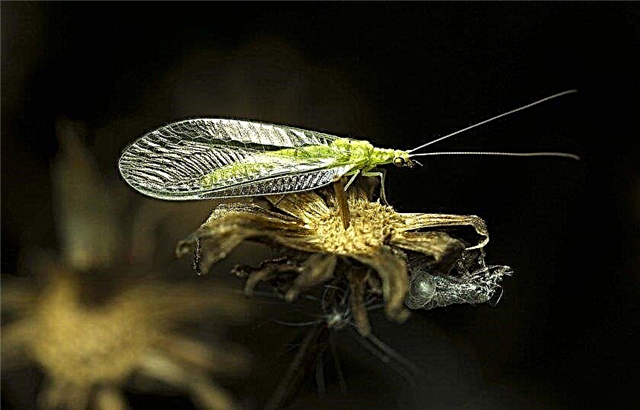
- Macrolofus. This is a bug of green color with a size of 2.7-3.7 mm. For 1 m² enough 1-2 individuals. Life expectancy is about a month. The female lays 140 eggs, of which 70–80 units survive. From oviposition to the appearance of an adult, 6-8 weeks pass. During the absence of the pest, bedbugs are fed with frozen eggs of a grain moth.
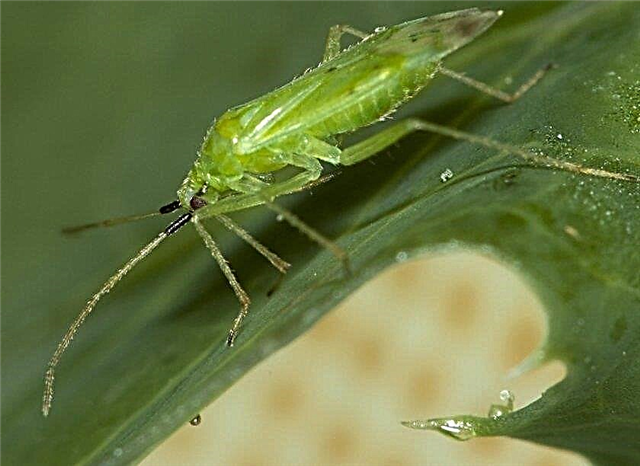
- Ankarsia. This insect is small in size about 0.6 mm in length with a yellow abdomen in females and dark brown in males. On 2 m², only 3 individuals are needed. Females of this insect masonry in whitefly larvae. The offspring as it grows begins to eat the larvae, which leads to their death.
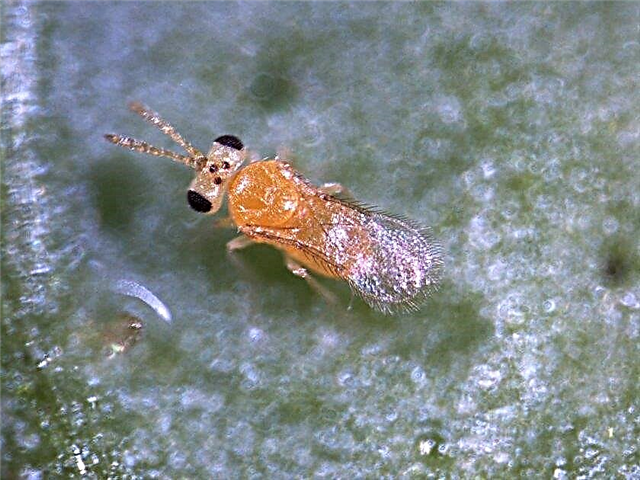
- ladybug. This insect belongs to the beetle family and is widespread. From spring to late autumn, these insects actively destroy pests such as aphids and whiteflies. Life expectancy is from several months to a year, depending on food and weather conditions. Younger individuals have a bright orange color, which fades with age. Ladybugs secrete a poisonous liquid with a pungent smell from the joints of the legs. These insects fly well.
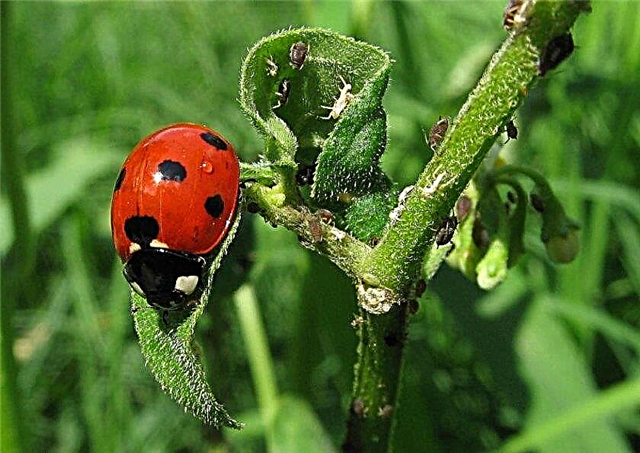
Biological methods also include biologics such as Verticillin containing spores and mycelium of the entomopathogenic fungus Verticillium lecanii, which leads to the death of offspring of whiteflies and aphids.
Preventive measures
It is difficult to get rid of whiteflies, so experts in growing tomatoes in greenhouses recommend the following prophylaxis:
- Disinfect the greenhouse and tools in spring and autumn.
- To smoke a hothouse in the spring before planting seedlings with tobacco checkers.
- After harvesting the last fruit crop, it is imperative to remove the residual vegetation, burn it and dig the soil.
- To disinfect the soil using copper sulfate. The solution is prepared on the basis of a ratio of 200 g per 10 l of water. The procedure is carried out 1 time in 3 years.
- Do not thicken the landing. Seedlings must be planted at an acceptable distance from each other.
- Avoid excess moisture. This contributes to the rapid reproduction of this pest. It is necessary to constantly ventilate the greenhouse.
- To carry out preventive spraying with the help of folk remedies or chemical preparations.
Did you know? Ladybug in the West in ancient times was considered a symbol of good luck. European Catholics attribute the ladybug to the insect of the Virgin Mary. The killing of a ladybug in a number of cultures is unacceptable.
Whiteflies in greenhouses need to be noticed in time and use different methods of getting rid of it. If there are too many pests, it is better to use effective chemicals, in other cases, you can use alternative methods and folk remedies.








